How to make your own DIY handlebar roll harness
Originally posted on August 23, 2016 at 7:00 am by Gabriel AmadeusThe market is awash with a huge assortment of very well-made bikepacking bags to fit in every nook and cranny of your bike. One of the simplest, and often over-complicated methods of transport is strapping a load to your bicycle’s handlebars. If it’s a small, light load you can get away with very little: I’ve secured a tent to the front of my drop bars with nothing more than stretchy ski straps.
But if you’re looking to carry a larger load, you’ll want something more rigid and secure, while also eliminating brake lever interference. When I ran across the basics of this design on a bikepacking forum, I started experimenting. Now in its fifth iteration, this design has gotten stronger, lighter and much more secure.
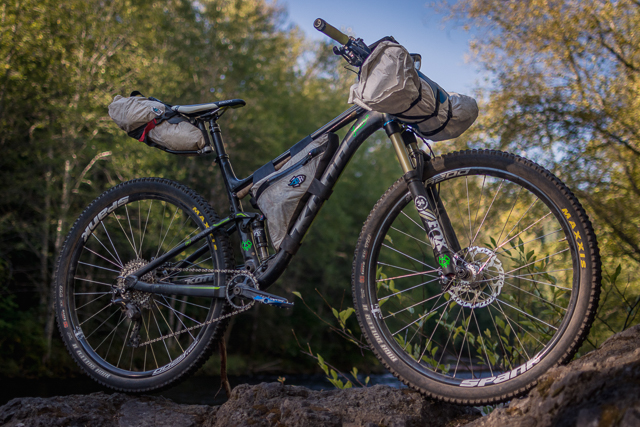
In my experience, it holds loads more stable than commercially available harnesses. It adds rigidity and locks the load weight against the bars and head tube, preventing bounce and chatter. As an additional bonus, the straps around the circumference provide a perfect attachment point for small bags, knife sheaths, bear spray, feathers, skulls, flowers and other talismans. It’s a cheap and easy project requiring very basic tools that anyone should be able to do in an afternoon.
What You Need
This starts with the Limberlost Handlebar Roll Harness Template, or make your own. You can download the Limberlost template for just $5. Print it full size at Kinkos or tile the pages on your home printer.
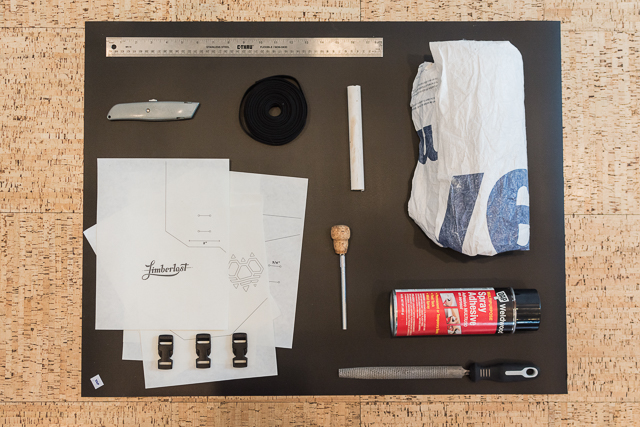
- A stuff sack approximately 22 by 7 inches, or my preference: an 8 by 8 foot sheet of Tyvek that doubles as a shelter or ground cloth. Should cost you about $8.
- 2 by 3 foot sheet of 0.035-inch polyethylene plastic. We’ll be laminating two plies of polyethylene together for our harness, but if you fi nd a heavier plastic a single layer may suffice. About $4.
- 9 feet of three-quarter-inch nylon webbing straps (you might find pre-sewn buckle straps at your gear store, but sewing your own is cheaper). About $3.
- 3 buckles, three-quarter-inch width. About $1.50 or dirtbag tip: cut buckles and webbing off old backpacks before discarding.
- 6 inches of half-inch PVC tubing. About $0.50.
- 6 inches of paracord. About $0.50.
- Utility or X-Acto knife and new blade
- Saw
- 1/8 – inch hole punch or drill bit
- Half round rasp
- Spray adhesive
- 60 grit sandpaper
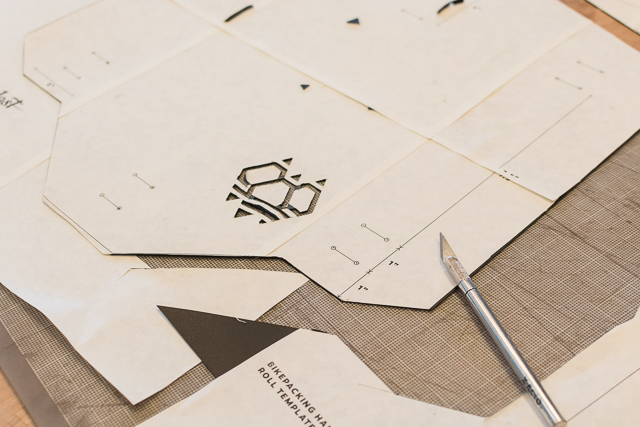
Instructions
Using the template, cut the plastic to shape. Easy-Tack makes the tracing and cutting much easier. Use a pin to mark where the keyholes of the strap slits will be but don’t cut yet. Feel free to experiment with the template — this is designed for wide mountain bike handlebars and a suspension fork, but if you will be using the harness with drop bars you’ll need to make it narrower.
The important thing is that you have rigidity against the standoffs. Sand one surface of each shape, then apply spray adhesive and roll into a cylinder around a filled stuff sack. Use straps to hold its shape while the adhesive dries. After glue has set, use a drill or hole punch where you marked the slit ends to prevent cracking and then cut the webbing slits.
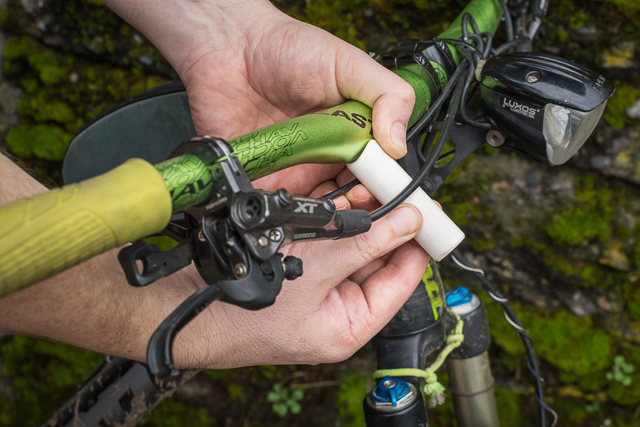
Cut three, 33 inch straps, melt the ends and sew the buckles. (Once you’re all done feel free to trim them shorter if needed.) Measure, cut and sand PVC standoffs to a length that will clear your brake levers. Here I went with 3 inches to accommodate a variety of bike setups, but if it’s for the bike pictured I’d shorten to about 2.25 inches. I like to contour the end that rests against the handlebars with the rasp and sand down all the sharp edges.
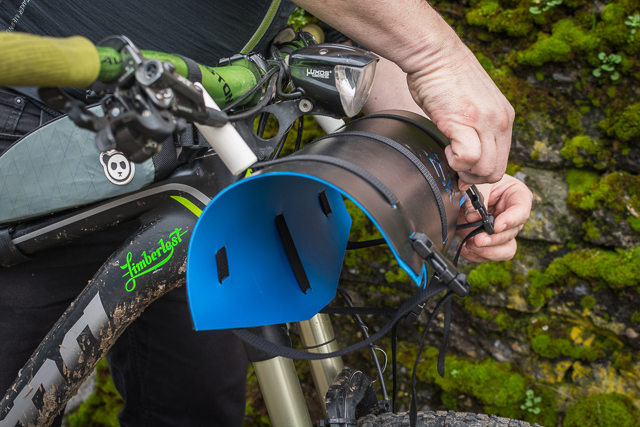
You’ve done the lion’s share at this point, but the threading of the webbing can be complicated. On the left and right route the webbing through the front double slits, into the standoff, around the handlebar, back through the standoff, and through the rear set of slits. Make sure the standoffs are aligned with each other and the harness will rest against the bike’s headtube without kinking any brake or shifter housing. The rear center edge of the harness should end up just in front of the fork crown. This is the trickiest part and each bike is different.

In order to prevent the weighted harness from bouncing we’re going to anchor it against the headtube. If there is enough tubing above the lower headset race just a simple loop of paracord will do the trick. If there is none, you’ll have to tie a harness as shown.
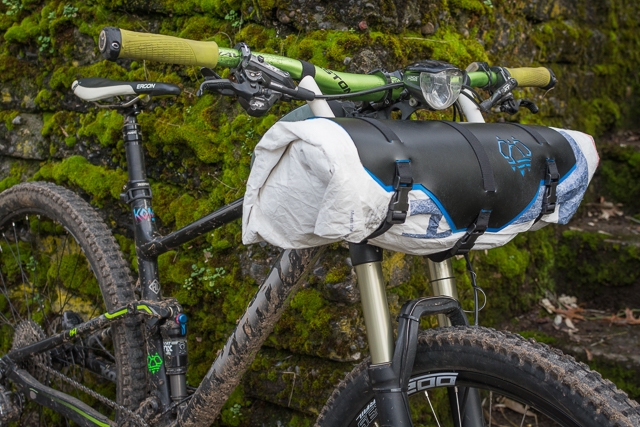
Route the third strap through the slits and around the paracord. The most abrasion will come from your headtube, but the template is designed to place the plastic (not webbing) against this hot spot. Cover your headtube with Gorilla Tape if you’re worried about the paint job.
Fill your stuff sack or roll up your Tyvek tarp and strap into place. It’ll take some adjusting the first few times you do it, but once cinched down tightly this harness system holds a load more securely than most commercially available systems. A fter riding for a while, notice how it shi fts and interferes with cable housing and make adjustments as needed.
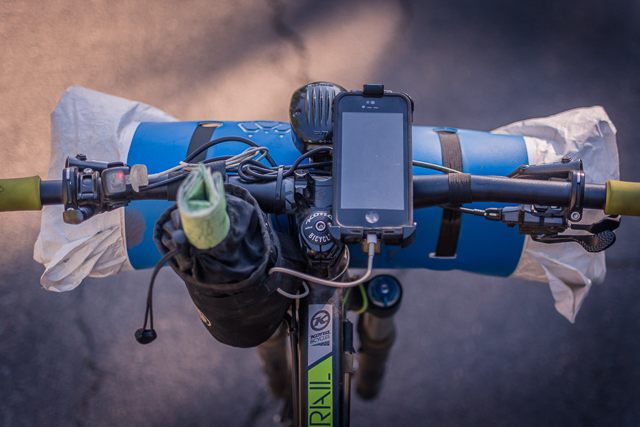
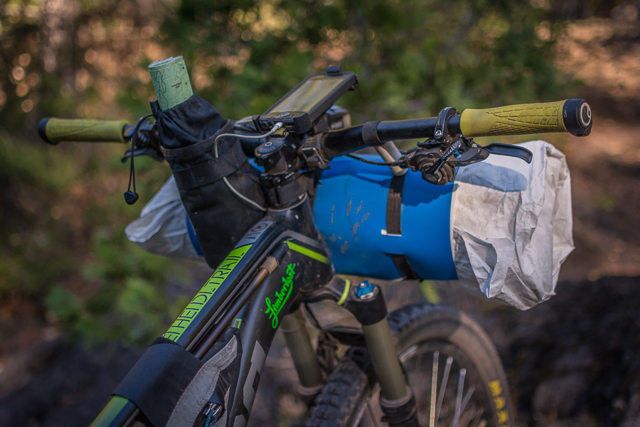
Originally published in Issue #41